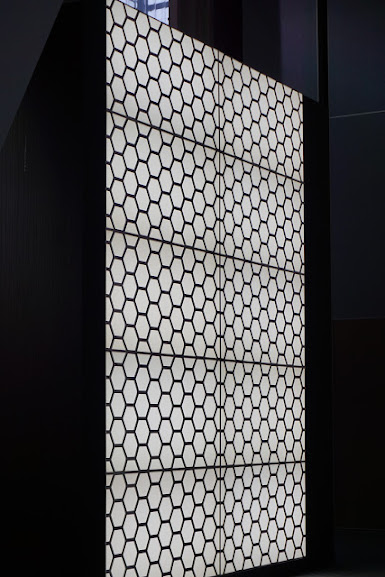a look at a craftsman from his perspective...
check out the beautiful,
hand crafted
wood furniture and cabinetry
by Cliff Moran
Here is a unique opportunity to learn the perspective of a master talent in the design industry and hear what he has to say about his illustrious, long career that has stood the test of time. Cliff Moran has built his portfolio on his talent, but as anyone in the industry knows it takes additional skills to achieve a long career. Let's take a look at Cliff and his designs and inspirations --
Cliff Moran Woodworking
636 Ethan Allen Highway
Ridgefield, CT 06877
203/438-0477
http://moranwoodworking.com/
email: info@moranwoodworking.com
Cliff Moran Woodworking
636 Ethan Allen Highway
Ridgefield, CT 06877
203/438-0477
http://moranwoodworking.com/
email: info@moranwoodworking.com
We can all appreciate a beautiful piece of wood, and it resonates with us whether we lean towards traditional or modern furnishings. Because I've shown antiques (including a retrospective of chairs and a new line of furniture) this month on Nest, it is only fitting to feature a talented cabinet maker as well. Artrisans and craftsman are what make the design industry possible -- and after a bit of time emphasizing excess, it seems we are returning to an appreciation of quality over quantity in the design world. Read October 2009's post about a current old world stone carver in-residence at the Cathedral of St. John the Divine in Manhattan, the American decorative arts wing at the MET and some beautiful furnishings at NYC's Gracie Mansion here.
I'm happy to bring you a close up look at the high quality work of Cliff Moran. We worked together on projects a few years ago and he is the consummate professional. Since 1982, Cliff has created custom woodwork and furniture. He holds a BFA in Industrial Design from Rhode Island school of Design with an emphasis on furniture design, and it is easy to see he has honed his skill as a craftsman over the years. After studying with Tage Frid, John Dunnigan, Alphonse Matia, and others in the industry, Cliff is now a versatile artisan. He can build virtually any style of cabinetry or furniture to suit any job, although his own designs tend toward modern and linear forms from the Arts and Crafts styles, with a bit of Scandinavian influences tossed in the mix.
Over his career, Cliff has concentrated on many projects with high-end clients in the New York metropolitan area. In addition, he has worked on many commerical and restaurant projects. He is now settled into a 2,500 suare foot studio only 50 yards from his home in Connecticut. Because his studio is fully equipped with precise, sophisticated German equipment, Cliff and his team are able to take on large and sophisticated projects. Read below my interview with Cliff and take a look at his fabulous work:I'm happy to bring you a close up look at the high quality work of Cliff Moran. We worked together on projects a few years ago and he is the consummate professional. Since 1982, Cliff has created custom woodwork and furniture. He holds a BFA in Industrial Design from Rhode Island school of Design with an emphasis on furniture design, and it is easy to see he has honed his skill as a craftsman over the years. After studying with Tage Frid, John Dunnigan, Alphonse Matia, and others in the industry, Cliff is now a versatile artisan. He can build virtually any style of cabinetry or furniture to suit any job, although his own designs tend toward modern and linear forms from the Arts and Crafts styles, with a bit of Scandinavian influences tossed in the mix.
 |
| Cabinetry in many shapes and forms |
I studied Industrial Design and Furniture Design at Rhode island School of Design. I moved to New York City after graduation and started to put together a workshop.
Q: Did you have a mentor and if so, what about him/her inspired you?
When I was at RISD I studied with Tage Frid, a Danish Master Craftsman who was kind of a legend in the woodworking world. His extremely spare, minimal aesthetic made me want to strip away everything that was not essential to every design I worked on.
Q: What is it about furniture making that you love?
The flexibility to let the subtlety of the design evolve as I build the piece. Even if I have design drawings, and build a prototype, I find that the first time I build a new piece there are subtle shaping changes that happen as the piece develops - sometimes from the character of the material I am working with, sometimes just from the feel of the piece. When you are building one-off pieces, or small batch productions you can make these changes as you go.
Q: What is your favorite part of the process?
The problem solving - figuring out the sequence of what I have to do to build the piece efficiently- figuring out the breakdown of parts, the machinery set-ups and jigs to make each part efficiently without compromising anything about the end result.
Q: I know you enjoy Arts & Crafts--what is it about that particular style that you like?
There is nothing extra in a good Arts and Crafts design. Every part, every detail is there for a reason - if you were to remove any detail, however subtle, something would be lost.
Q: What advice would you like to give to interior designers when working with a cabinet and furniture maker?
The first project in a new relationship between a designer and craftsman can sometimes be challenging. Communication is key right from the start. Reconciling the scope of work and expectation level with the budget can be tricky. As you work together, you start to establish trust - I get a better understanding of the look the designer is after, and the designer gains confidence in relinquishing some control over some of the details. Once this trust is established, subsequent projects run even more efficiently, so it is to everyones benefit when it becomes an ongoing team relationship between designer and builder.
Q: What advice would you like to give to artisans just entering in your line of work?
Find someone whose work you like and try to get some experience working with them. Unless you are coming into a large production shop with lots of employees, it is important to have a comfortable personal repore with the person you will be working with. Ask a lot of questions and don't be afraid to risk mistakes. There is a lot of repetitive and unglamorous work that has to be done over and over for it to become second nature. Only then does it become simply part of the process.
Q: What are some of the biggest challenges to what you do?
Scheduling is probably the most important challenge. You want to get the work done when it is needed, but not before the job-site is ready. You need to remain flexible to coordinate your work with that of the other trades and artisans involved. Often, particularly on larger cabinet jobs, there is additional work added as the project progresses and this can affect your projected schedule for other projects going forward.
Q: Can you tell me about an exciting and fulfilling project you have worked on?
One of the most enjoyable projects I have done recently has to have been the interior in a new Arts and Crafts style house in Kent Connecticut. The project got off to a great start with a very comfortable connection with the clients. We shared a vision of what the work should feel like. We referenced a lot of photos of great Arts and Crafts houses and needed to do remarkably little drawing - I was given great latitude to design details as I went, so the work had a freshness and life that can sometimes be lost in projects that are overwrought. (this project is shown on my website - cabinetry section, most of page three and all of page four).
Thank You Cliff
for an insider's view
of
furniture making --
many of us can appreciate
the work more
when hearing your perspective!









